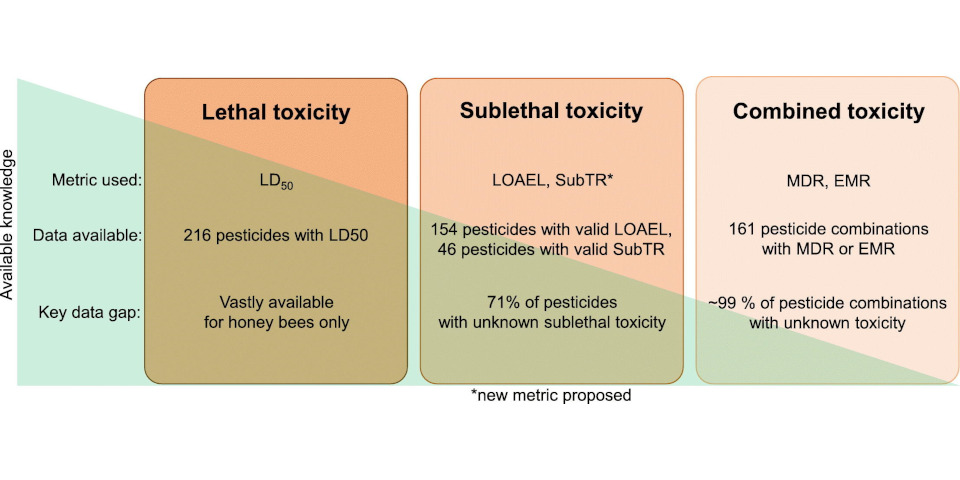Abstract
Multiple stressors threaten bee health, a major one being pesticides. Bees are simultaneously exposed to multiple pesticides that can cause both lethal and sublethal effects. Risk assessment and most research on bee health, however, focus on lethal individual effects. Here, we performed a systematic literature review and meta-analysis that summarizes and re-interprets the available qualitative and quantitative information on the lethal, sublethal, and combined toxicity of a comprehensive range of pesticides on bees. We provide results (1970–2019) for multiple bee species (Bombus, Osmia, Megachile, Melipona, Partamona, Scaptotrigona), although most works focused on Apis mellifera L. (78 %). Our harmonised results document the lethal toxicity of pesticides in bees (n = 377 pesticides) and the types of sublethal testing methods and related effects that cause a sublethal effect (n = 375 sublethal experiments). We identified the most common combinations of pesticides and mode of actions tested, and summarize the experimental methods, magnitude of the interactions, and robustness of available data (n = 361 experiments). We provide open access searchable, comprehensive, and integrated list of pesticides and their levels causing lethal, sublethal, and combined effects. We report major data gaps related to pesticide’s sublethal (71 %) and combined (e.g., ~99 %) toxicity. We identified pesticides and mode of actions of greatest concern in terms of sublethal (chlorothalonil, pymetrozine, glyphosate; neonicotinoids) and combined (tau-fluvalinate combinations; acetylcholinesterase inhibitors and neonicotinoids) effects. Although certain pesticides have faced regulatory restrictions in specific countries (chlorothalonil, pymetrozine, neonicotinoids), most are still widely used worldwide (e.g., glyphosate). This work aims at facilitating the implementation of more comprehensive and harmonised research and risk assessments, considering sublethal and combined effects. To ensure safeguarding pollinators and the environment, we advocate for a more refined and holistic assessment that do not only focus on lethality but uses harmonised methods to test sublethal and relevant combinations.










